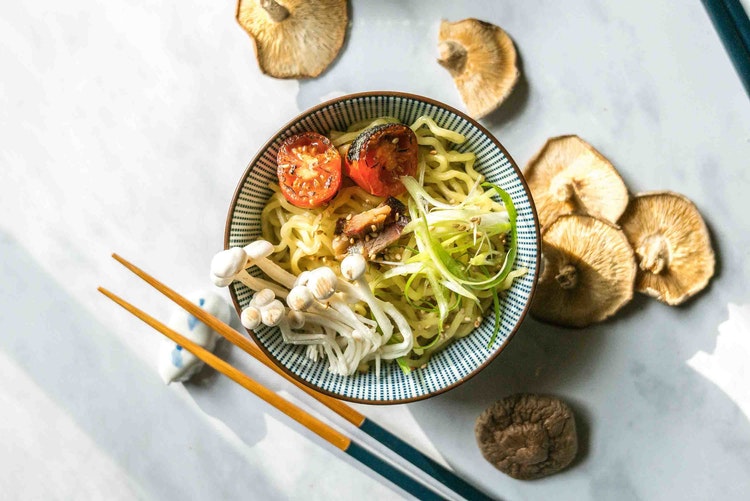Umami might not be a word that the average American diner uses every day. But it is a taste that diners seek, regardless of what word they use to describe the taste.
According to the official Umami Information Center, “umami is a pleasant savory taste imparted by glutamate, a type of amino acid, and ribonucleotides, including inosinate and guanylate, which occur naturally in many foods including meat, fish, vegetables and dairy products.”
That’s the scientific definition. In practical application, though, umami is recognizable in some of the most beloved flavors and ingredients. The parmigiana-Reggiano sprinkled over tomato sauce on a classic pasta dish? Umami. Melted cheddar coming together with a perfectly grilled beef patty and ketchup on a burger? Umami. Cabbage sautéed with soy sauce and miso to form the base of a craveable stir-fry dish? That’s umami too.
Compared to the four familiar tastes—sweet, sour, salt, and bitter—umami is the new kid on the block. Surprisingly, though, it's a taste that humans have known since birth. Glutamate makes up roughly half of the amino acid in breastmilk. But the identification of the umami taste didn’t happen until 2001, when a Japanese professor named Dr. Kikunae Ikeda discovered it.
Though there is a list of foods that have the umami taste on their own (everything from egg yolks to soy sauce to gorgonzola) the real flavor impact comes when umami ingredients are combined.
“Flavor is an ever-evolving art, ripe with opportunities for interpretation, innovation and creativity,” Amanda Topper, associate director of food service research at Mintel told Food Business News Magazine. “Today, that opportunity lies in the expansion of international flavors and ingredients, and in the years ahead, we predict the ingenuity of new dishes will come down to enhancing the chemistry of ingredients to create hearty masterpieces. The future of flavor also lies in creating healthy dishes without giving up satisfying taste.”
Umami can be magnified via something food scientists call umami synergy. Mixing a glutamate-rich ingredient with one rich in inosinate or guanylate amplifies flavors, Adam Fleishman explains in his cookbook, Flavor Bombs. Sort of like couples who are stronger together than on their own, Fleishman cites perfect umami pairings as dashi + miso, mirepoix + beef stock, hamburger + cheddar cheese, and Tomato sauce + parmesan cheese.
Cooking techniques can also help magnify the umami flavor in a dish. Searing over high heat, throwing in an extra pinch of salt, and cooking low and slow all help ramp up the flavor sensations in a dish. Whether achieved via ingredients, flavor combinations, or cooking techniques, dishes with umami can provide a dining experience customers are hungry to repeat.

